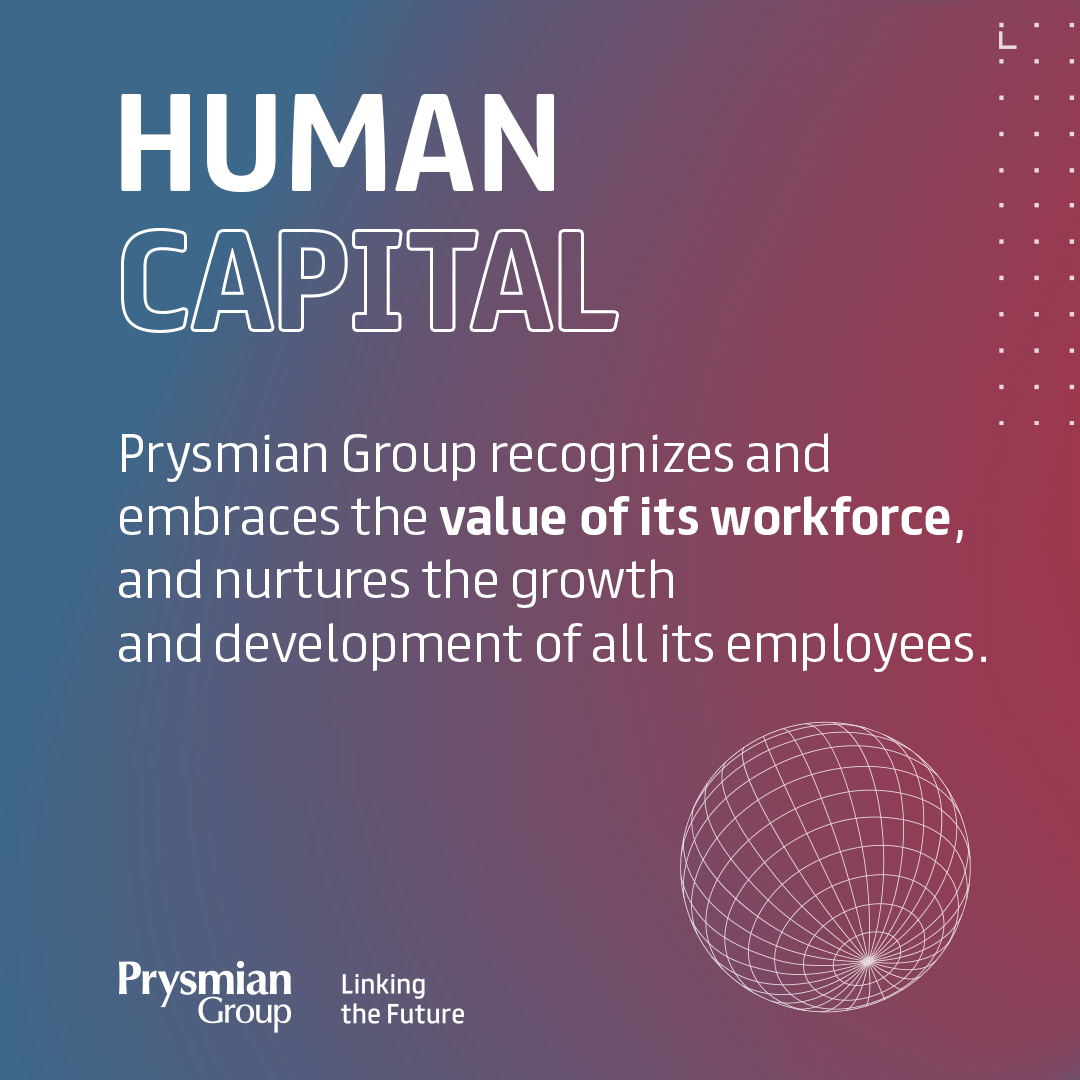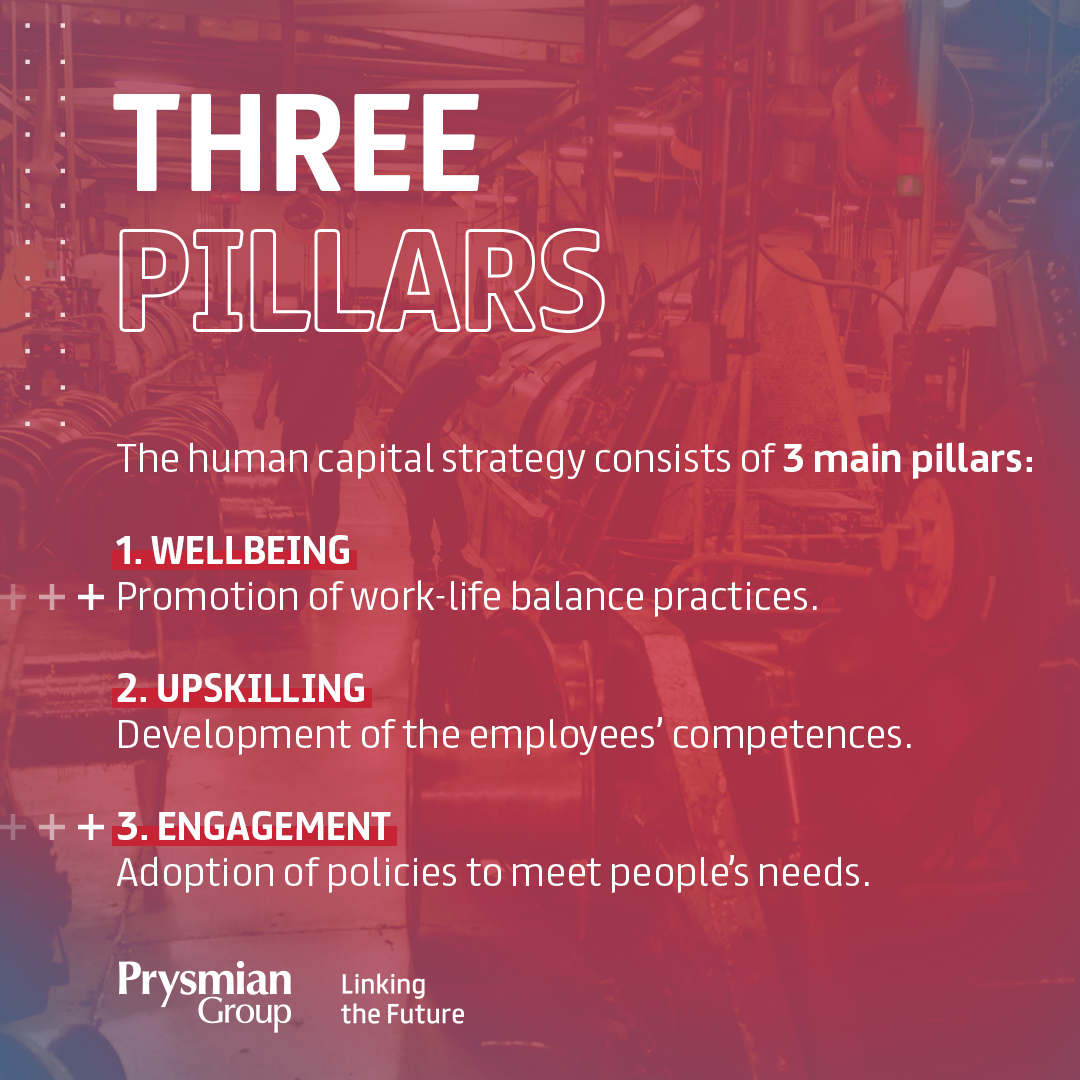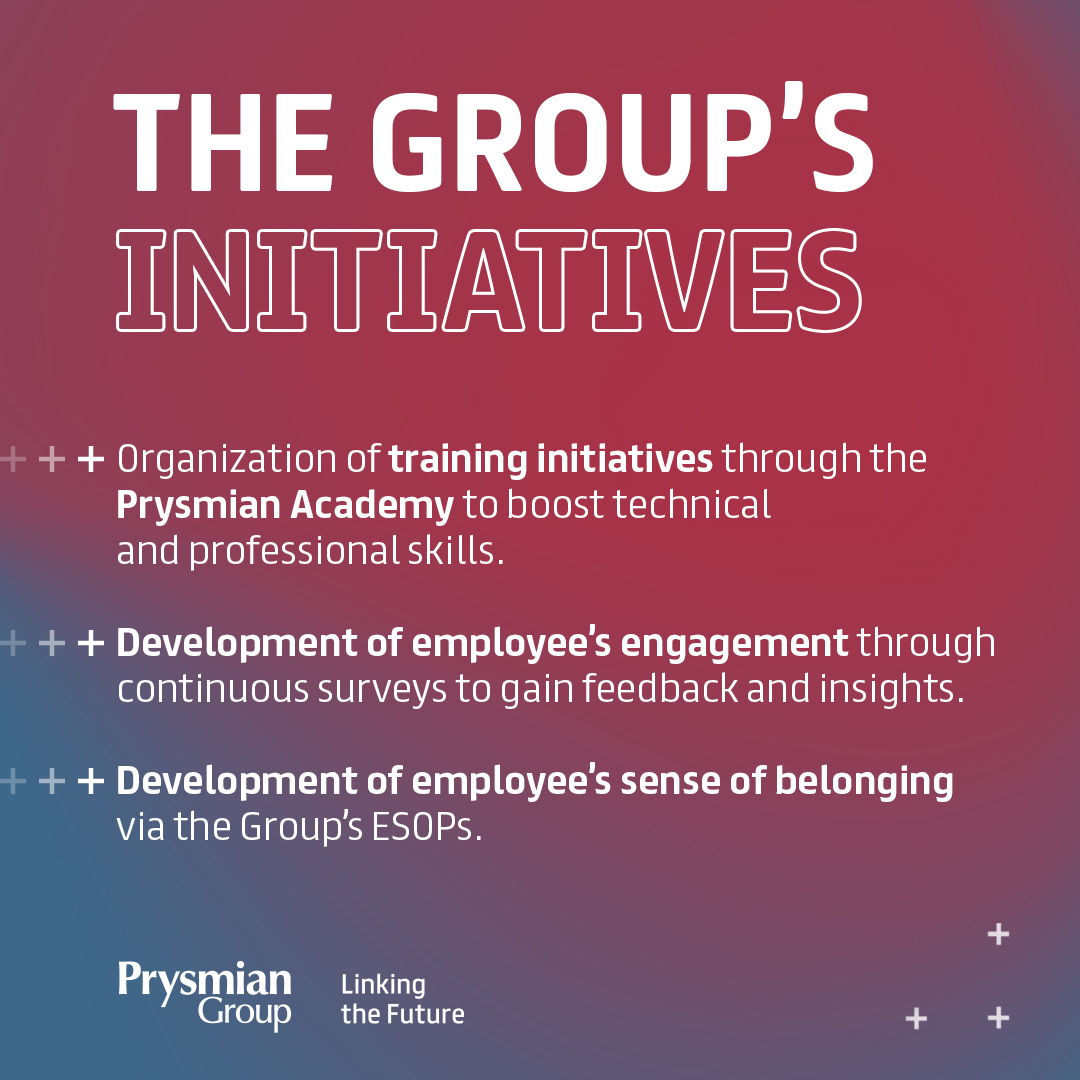The history and success of Prysmian Group is the result of the history of the people who work there and who, through their knowledge and skills, their passion and their commitment, have become the key drivers in achieving shared objectives. In the dynamic landscape of modern business, in fact, companies are continually seeking the formula for growth and success and, while cutting-edge technologies, data-driven strategies, and innovative products undeniably play crucial roles, the potential of people as human capital is a fundamental cornerstone of success.
Companies that recognize and embrace the true value of their workforce, from cultivating a thriving company culture that fosters creativity and collaboration to nurturing the growth and development of employees, often find themselves at the forefront of progress. This is why, in the past years, Prysmian continued to pursue objectives in line with its Social Ambition (launched in 2021) to increase the level of Diversity, Equity and Inclusion (DE&I) and digital inclusion within the organization, employee engagement and upskilling, and respect for human rights throughout the value chain. This is because, to the Group, the prime driver for value creation is represented by respect and safety of people and the socio-economic development of the communities in which the company operates.









